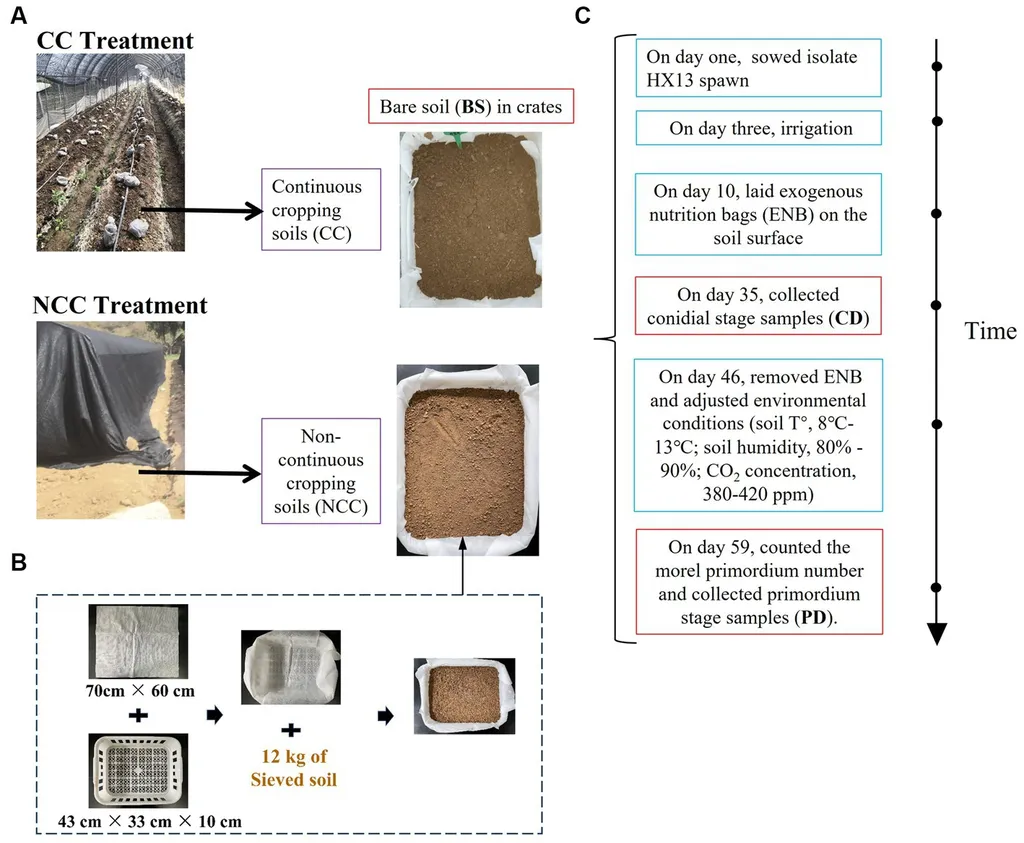In the heart of China’s Yunnan province, a team of researchers led by Ping Yu from the Biotechnology and Germplasm Resources Institute at the Yunnan Academy of Agricultural Sciences has uncovered a complex interplay of microbial and chemical factors that are stymieing the continuous cultivation of Morchella, a highly prized edible fungus known as the true morel. Their findings, published in the journal *Microbiology Research* (translated from Chinese as “微生物学研究”), shed light on the biological mechanisms behind the challenges faced by morel farmers, offering a glimpse into potential solutions for this burgeoning industry.
Morels are celebrated for their unique flavor and texture, commanding high prices in global markets. As demand has surged, so too has the scale of morel cultivation. However, farmers have encountered significant obstacles when attempting to grow morels continuously on the same soil. “The continuous cropping problem is a major bottleneck for the morel industry,” Yu explains. “Understanding the underlying mechanisms is crucial for developing sustainable cultivation practices.”
To unravel this agricultural enigma, Yu and his team employed advanced microbiome and metabolome analysis techniques. By sequencing the DNA of microorganisms in the soil, they identified a staggering 5288 bacterial and 1847 fungal operational taxonomic units (OTUs). Among these, certain bacterial genera such as *Arthrobacter*, *Tychonema*, *Rhodanobacter*, *Luteimonas*, and *Streptomyces*, along with pathogenic fungi, emerged as potential culprits hindering morel growth.
But the story doesn’t end with microbes. The researchers also delved into the chemical landscape of the soil, uncovering 368 metabolites. Eighteen of these compounds showed significant differences between morel-continuous cropping soil and control soil, including toxic substances like 2,4,5-Trichloro-6-Hydroxybenzene-1,3-Dicarbonitrile, 2,4-Dichloro-6-nitrophenol, and Aflatoxin B2. “These toxic metabolites, likely secreted by the morels themselves, contribute to the soil’s deteriorating quality over time,” Yu notes.
The implications of this research extend far beyond the morel industry. As agricultural practices increasingly turn to high-intensity, continuous cropping systems, understanding the intricate dance between crops, microbes, and soil chemistry becomes paramount. “This study highlights the importance of holistic approaches to soil management,” Yu asserts. “By considering both the microbial and chemical aspects, we can develop more resilient and sustainable agricultural systems.”
For the morel industry, these findings could pave the way for innovative solutions, such as targeted microbial inoculants or soil amendments designed to mitigate the effects of toxic metabolites. As the global demand for morels continues to grow, so too will the need for scientifically informed, sustainable cultivation practices.
In the broader context of agriculture, this research underscores the complex web of interactions that govern soil health and crop productivity. As we strive to feed a growing population in the face of climate change, understanding and harnessing these interactions will be key to building a more sustainable and resilient future for agriculture. With their groundbreaking work, Yu and his team have taken a significant step in that direction, offering hope to morel farmers and agricultural innovators alike.

